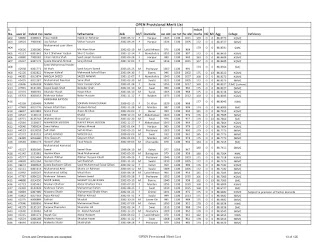CHAPTER NO.12 ELECTROCHEMISTRY
CHAPTER NO.12 ELECTROCHEMISTRY
1.
|
weak
electrolyte in solution is
a.
completely ionizeda
b.
slightly ionized
c.
never ionized
d.
destroyed
|
B
|
2.
|
strong
electrolyte in solution is
a.
completely ionized
b.
slightly ionized
c.
never ionized
d.
destroyed
|
A
|
3.
|
which
one of the following is strong electrolyte in solution is
a.
ammonium hydroxide
b.
carbonic acid
c.
potassium iodide
d.
acetic acid
|
A
|
4.
|
the
cathode has a charge
a.
positive
b.
negative
c.
neutral
d.
zero
|
B
|
5.
|
the
cations has a charge
a.
positive
b.
negative
c.
neutral
d.
zero
|
A
|
6.
|
the
oxidation number of Cl in HClO3 is
a.
5
b.
6
c.
2
d.
3
|
A
|
7.
|
the
oxidation number of Cr in K2Cr2O7 is
a.
5
b.
6
c.
2
d.
3
|
B
|
8.
|
the
oxidation number of S in S2O3-2 is
a.
5
b.
6
c.
2
d.
3
|
C
|
9.
|
The
oxidation number of manganese in MnO4-1 is
a.
2
b.
3
c.
4
d.
7
|
D
|
10.
|
Which
one of the following is reduction reaction
a.
Br2 → 2Br-
b.
Fe+2 →Fe+3
c.
Zn →Zn+2
d.
Sn →Sn+4
|
A
|
11.
|
A
cell in which a non spontaneous redox reaction is carried out by passing an
electric current is not a/an
a.
Galvanic cell
b.
Voltaic cell
c.
Daniell cell
d.
Electrolytic cell
|
D
|
12.
|
zinc
act is cathode when coupled with aluminum, this is because reduction
potential of
a.
Zn > Al
b.
Zn < Zl
c.
Zn = Al
d.
Zn =0
|
A
|
13.
|
Given
standard reduction potential for Fe+2 + 2 es → Fe -0.440 V
Fe+3
+ 3 es →Fe -0.036V The standard electrode potential
for Fe+3 +e →Fe+2 is
a.
-0.476
b.
0.496
c.
0.404
d.
-.404
|
D
|
14.
|
Electrolysis
is a process in which the cations and anions liberated from the electrolyte
are
a.
Hydrated
b.
Hydrolyzed
c.
Charged
d.
dicharged
|
B
|
15.
|
a
cell which produces electric current by a redox reaction is called a/an
a.
electrolytic cell
b.
voltaic cell
c.
half cell
standard
cell
|
A
|
16.
|
the
lead storage battery is a/an
a.
electrolytic cell
b.
voltaic cell
c.
standard cell
d.
half cell
|
A
|
17.
|
a
cell which produces electric current by a redox reaction is called a/an
a.
electrolytic cell
b.
voltaic cell
c.
dry cell
d.
electrolytic cell
|
B
|
18.
|
the
electrode potential of standard hydrogen electrode is
a.
0
b.
1
c.
-1
d.
2
|
A
|
19.
|
A
cathode has the reduction potential
a.
Less than the anode
b.
More than the anode
c.
The same as that of anode
d.
Always zero
|
B
|
20.
|
The
oxidation number of free element is
a.
1
b.
2
c.
3
d.
0
|
D
|
21.
|
Which
one of the following are strong oxidizing agent/s
a.
K2Cr2O7
b.
KMnO4
c.
K2Cr2O7 and KMnO4
d.
H2S and SO2
|
C
|
22.
|
Which
one of the following is strong reducing agents
a.
K2Cr2O7
b.
KMnO4
c.
K2Cr2O7 and KMnO4
d.
H2S and SOz
|
D
|
23.
|
Choose
the second law of Michael faraday
a.
W =Q
b.
W = ZIt
c.
W =Ite/F
d.
All of these
|
B
|
24.
|
The
value of F in W=Ite/F
a.
965 C
b.
9650 C
c.
96500 C
d.
965000 C
|
C
|
25.
|
Dry
cell is
a.
Electrolytic cell
b.
Nelson cell
c.
Voltaic cell
d.
All of these
|
C
|








Comments
Post a Comment